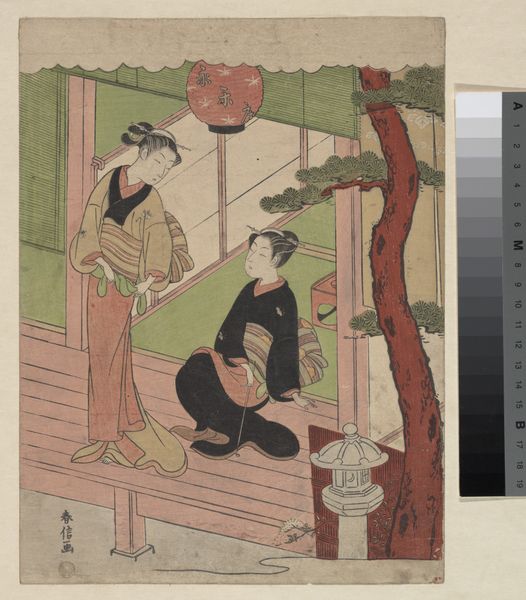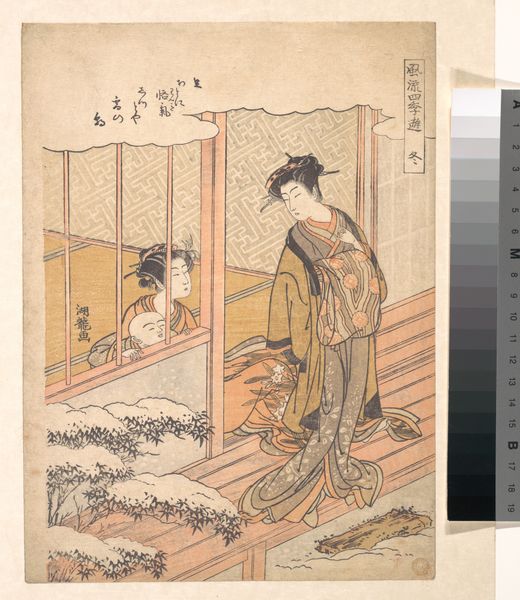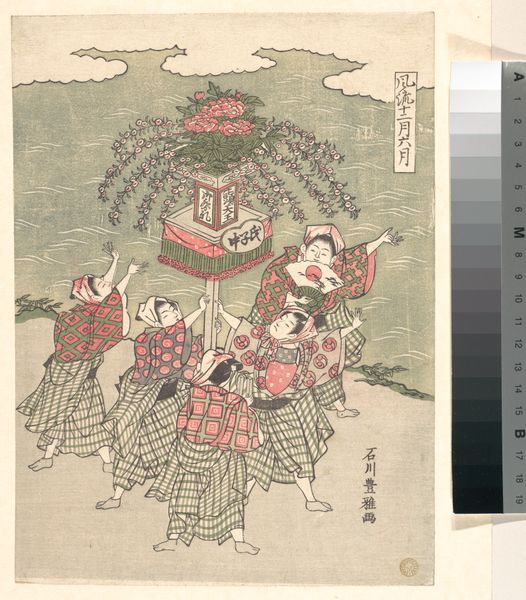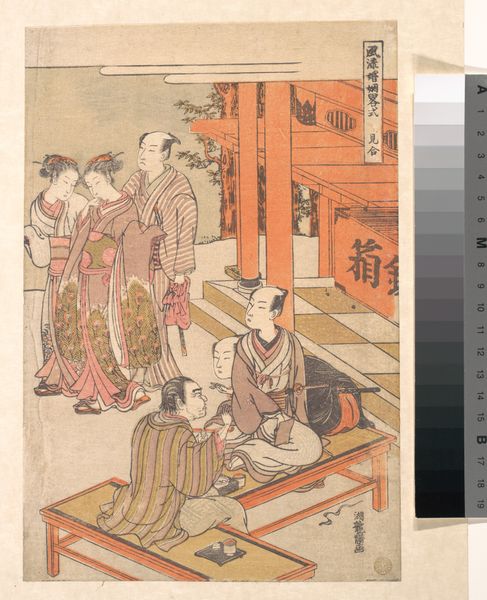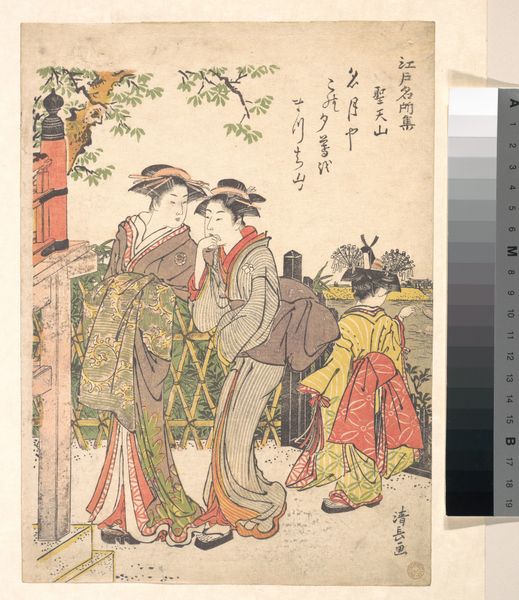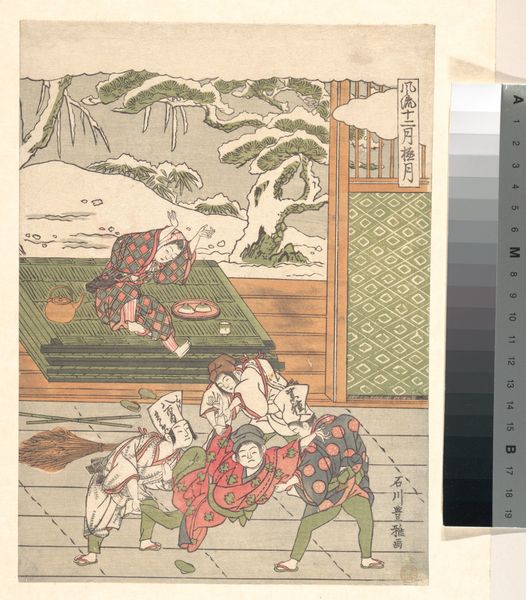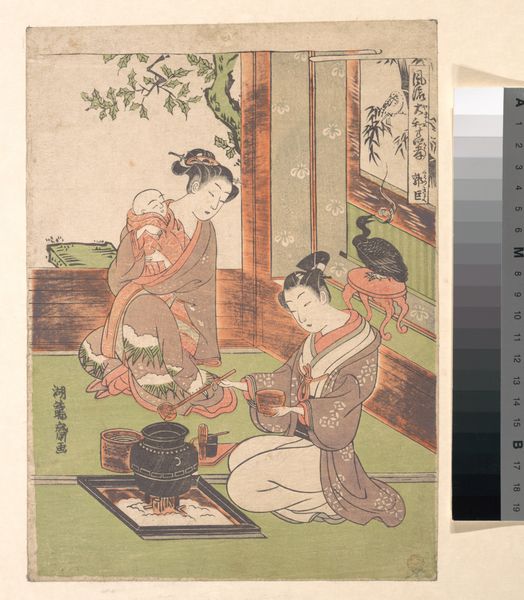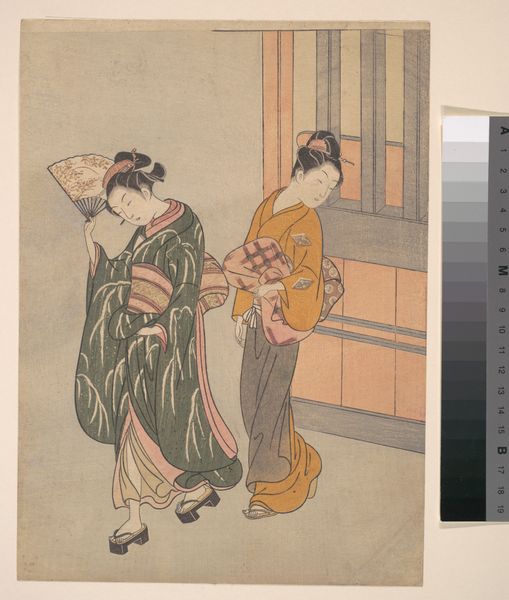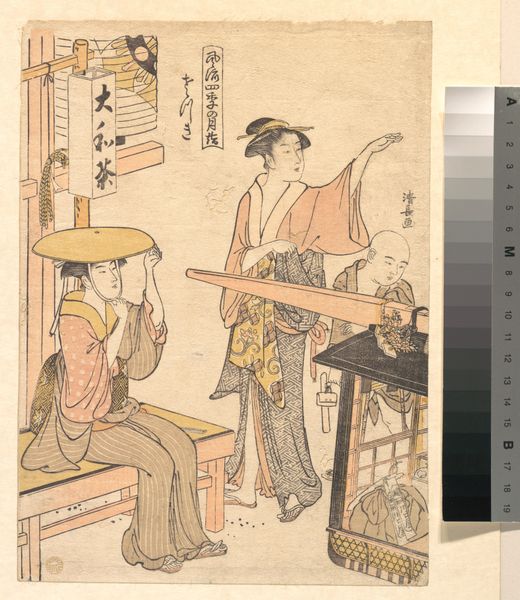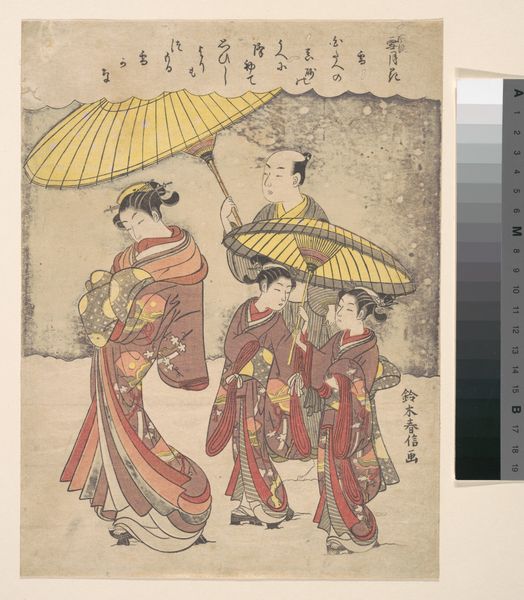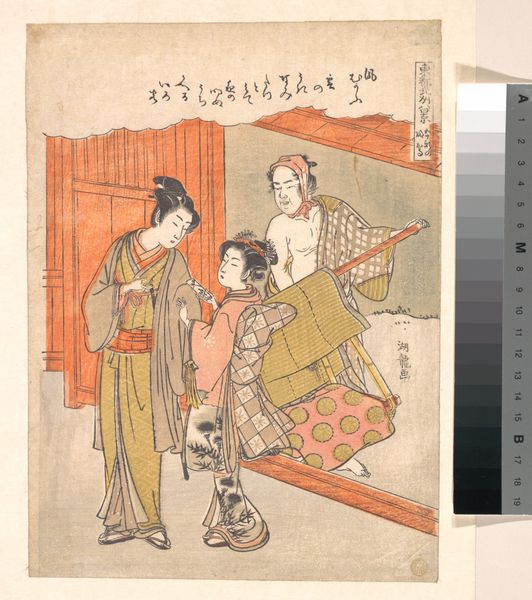
# print
#
asian-art
#
landscape
#
ukiyo-e
#
figuration
Dimensions: H. 10 in. (25.4 cm); W. 7 3/8 in. (18.7 cm)
Copyright: Public Domain
Curator: So evocative! What hits you first when you look at this print? Editor: Definitely the moon. It’s massive, a perfect, almost cartoonish circle hanging over this grassy scene. Like something out of a beautiful dream. And those reeds! They tickle the sky. What’s the story behind it? Curator: This is "The Eighth Month," a woodblock print attributed to Ishikawa Toyomasa, likely created between 1757 and 1777. The Metropolitan Museum of Art holds it in their collection, placing it within the rich artistic tradition of ukiyo-e. I see it as an interesting look at the Japanese Edo period and its interest in seasonal rituals and societal entertainment. Editor: The folks down below are totally captivated, too! Some sitting, some standing…pointing, sharing… It’s interesting—their faces are so simply drawn, yet the emotion feels complex and so present. Curator: Absolutely. The positioning of the figures is a considered way to explore the societal constructs around communal viewing. Their clothes point to class, gender, performativity within a social hierarchy. Look at how their bodies cluster in relation to one another. What hierarchies do you notice? Editor: You’re right, there is an organization to their interaction and grouping. Two figures appear distinct, with one female pointing to the sky. Their higher, almost detached positioning, separated from the other group, definitely feels intentional. I wonder about this particular month, why the interest, why memorialize the lunar moment? Curator: In Edo-period Japan, the eighth month of the lunar calendar held significance because it was the time for viewing the full moon and celebrating the harvest. "The Eighth Month" captures the shared ritual of moon-viewing, a moment transcending the quotidian because it reflected a cosmic understanding of the agricultural seasons. I like to explore it through the writings of people from marginalized groups at the time, examining their experience and its potential discordance to the idealized view presented here. Editor: See, that changes the way I look at it now. Knowing about that month and harvest…makes me feel a connection to rituals that happen across cultures. Everyone searching for that same circle of light and bounty, it’s kind of awesome! But, knowing more about its societal time capsule opens so much richer, even challenging meanings, in what appears on first glance, such a simple illustration of natural and shared, emotional wonder. Curator: And that's the strength of ukiyo-e. Appreciating the artistic technique combined with its cultural role offers fascinating points of departure and conversations. Editor: Yeah, well said. That gives me a lot to ponder… and I appreciate your contextual insights!
Comments
No comments
Be the first to comment and join the conversation on the ultimate creative platform.

